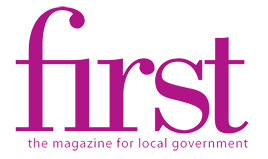The development of clean air zones (CAZs) is rising up the agenda for local authorities.
Whether they are the result of legal requirements, central government imposition or local initiative, they offer significant benefits. But there are a range of issues to consider and a great deal of planning needed to implement them.
For this reason, BDB Pitmans have organised a free webinar which will discuss the challenges involved in the delivery of clean air zone schemes. Many cities are having to work out what a clean air zone means for them, their economies and communities.
As the only law firm to have worked on successful clean air zone schemes, the team at BDB Pitmans will bring their insight to give top tips on the issues to address, the pitfalls to avoid and the solutions that have worked for others.
Certainly, the COVID-19 pandemic has brought a renewed focus on both air quality and local transport. The virus’ particular effects on respiration mean the case for improvements in air quality has never been stronger.
This is coupled with the experience of significantly cleaner air during lockdown, when traffic levels and associated pollution evaporated overnight, leading to calls for these lower levels of pollution to be maintained as lockdown eases.
Communities are more aware of the adverse impact of air quality, especially on older and younger groups and those with existing conditions. For some councillors, this has become a ‘doorstep’ issue so authorities are looking to progress plans so that they do something about air quality and the impact of climate change themselves.
Essentially, a CAZ introduces a daily charge for certain vehicle classes entering or moving within a defined area. Legally, they are created under the Transport Act 2000 where powers are given to local traffic authorities to make a charging scheme.
The Act also allows for traffic authorities to act jointly, opening up the possibility of joined-up CAZs covering one or more local authority areas within a conurbation.
A CAZ can take different forms and some authorities may choose other forms of charging schemes such as a workplace parking levy. The rules and requirements around each vary. It is important that an authority considers not just which scheme is most suitable for their preferred outcomes but also what works best for their communities and economy.
So, what are some of the key issues that any local authority needs to think about?
- The development of detailed assessment and analysis to ensure that the zone does not deter local economic activity but also incentivises improvements in the emissions of the worst polluting vehicles.
- The potential level of upfront costs and the use of revenue raised from the charge which is ring-fenced for local transport improvements.
- Designing a consultation and engagement strategy that secures the support of local communities, including businesses. This could include the development of a ‘brand’ for the scheme.
- The physical infrastructure required to implement a CAZ is not extensive but needs to be planned nonetheless.
- Whether any authority spending related to the CAZ, for instance in grants or subsidies for vehicle upgrades, falls foul of state aid rules.
- Consideration about the level of charges, for instance, to push behaviour towards upgrading vehicles to less polluting models or reducing journey numbers.
- The establishment of mechanisms for collection of charges and an enforcement process.
Local authorities can also use a scheme to build their own reputations and ‘sell’ the quality of its environment as a way of attracting businesses and inward investment both at home and globally.
My article with Laura Thornton for Local Government First.

